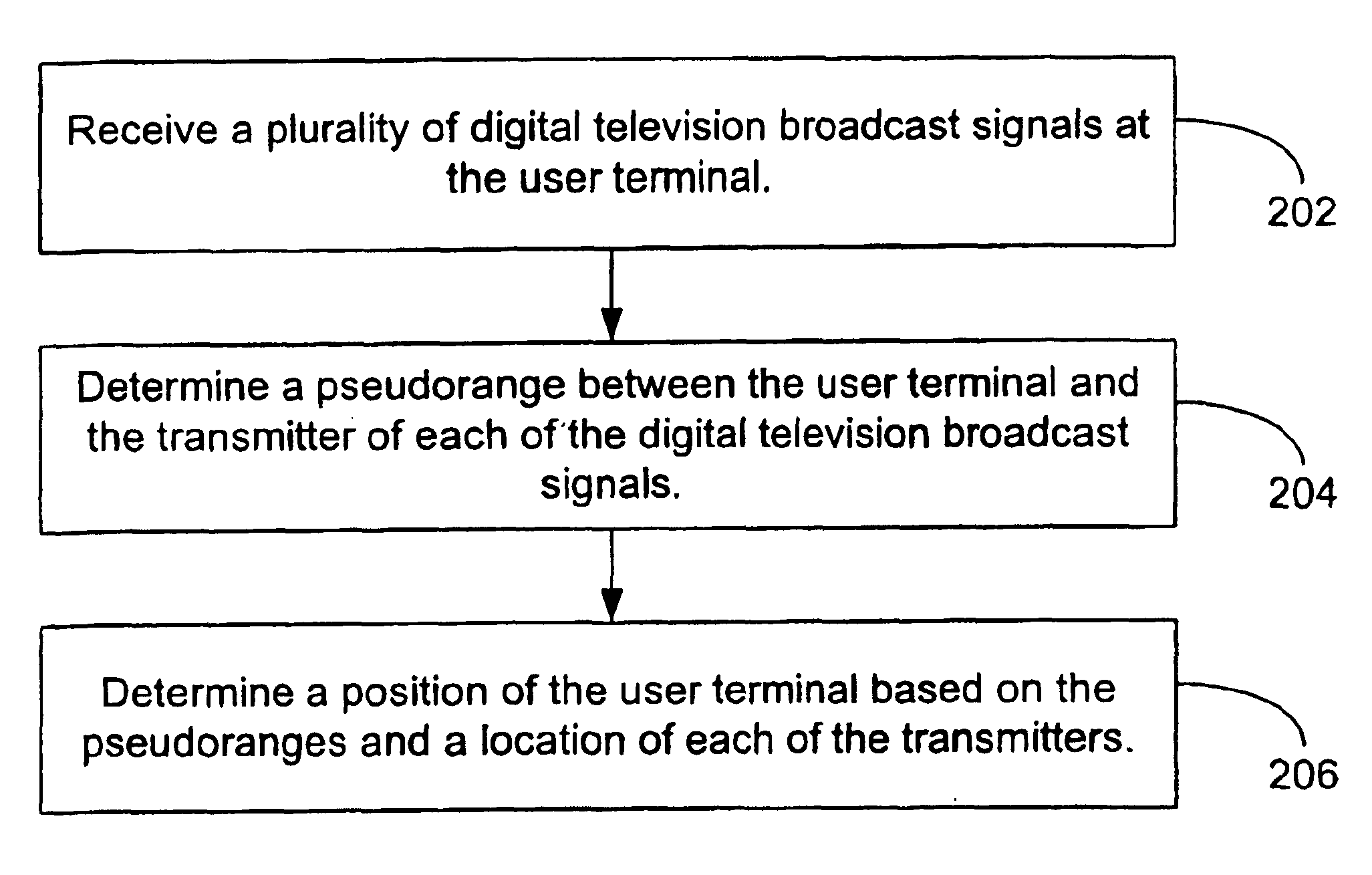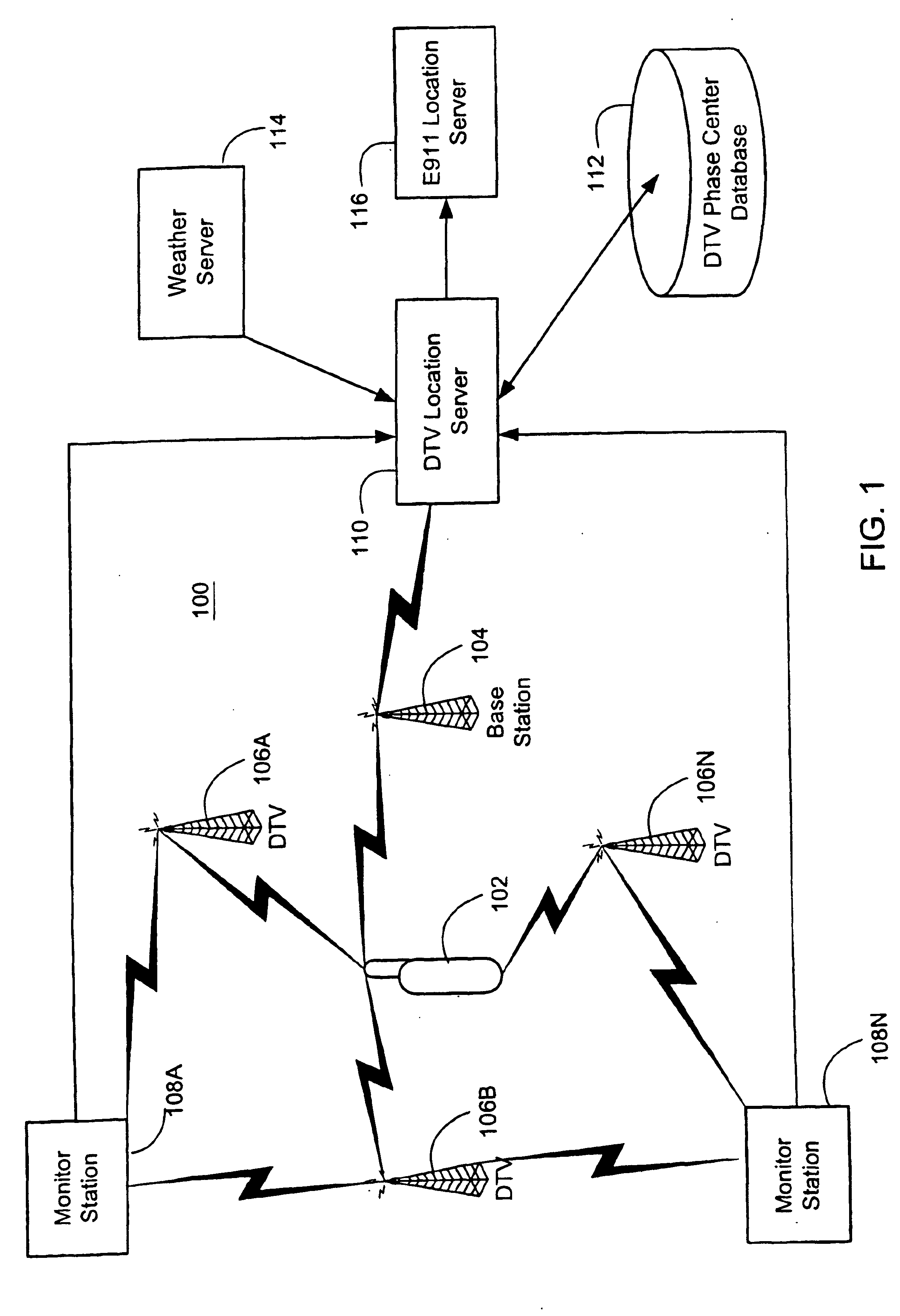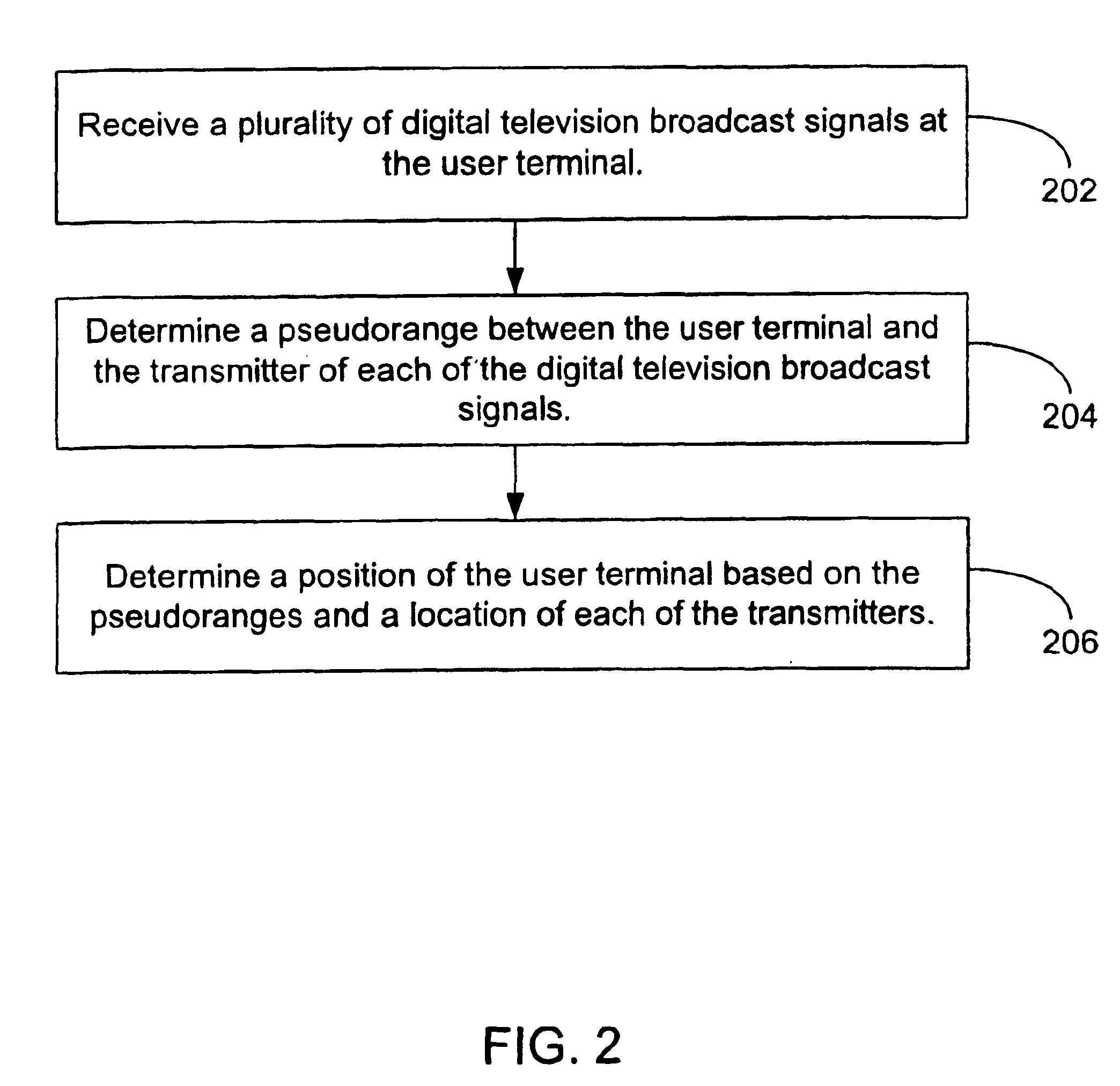Position location using broadcast digital television signals
a technology of digital television and position determination, applied in direction finders using radio waves, navigation instruments, instruments, etc., can solve the problems of marginally useful or not useful signals, less effective gps, and marginally useful signals, and achieves superior geometry, minimizing the effects of multipaths, and high power
- Summary
- Abstract
- Description
- Claims
- Application Information
AI Technical Summary
Benefits of technology
Problems solved by technology
Method used
Image
Examples
Embodiment Construction
Introduction
Digital television (DTV) is growing in popularity. DTV was first implemented in the United States in 1998. As of the end of 2000, 167 stations were on the air broadcasting the DTV signal. As of Feb. 28, 2001, approximately 1200 DTV construction permits had been acted on by the FCC. According to the FCC's objective, all television transmission will soon be digital, and analog signals will be eliminated. Public broadcasting stations must be digital by May 1, 2002 in order to retain their licenses. Private stations must be digital by May 1, 2003. Over 1600 DTV transmitters are expected in the United States.
These new DTV signals permit multiple standard definition TV signals or even high definition signals to be transmitted in the assigned 6 MHz channel. These new American Television Standards Committee (ATSC) DTV signals are completely different from the analog NTSC TV signals, are transmitted on new 6 MHz frequency channels, and have completely new capabilities.
The invento...
PUM
 Login to View More
Login to View More Abstract
Description
Claims
Application Information
 Login to View More
Login to View More - R&D
- Intellectual Property
- Life Sciences
- Materials
- Tech Scout
- Unparalleled Data Quality
- Higher Quality Content
- 60% Fewer Hallucinations
Browse by: Latest US Patents, China's latest patents, Technical Efficacy Thesaurus, Application Domain, Technology Topic, Popular Technical Reports.
© 2025 PatSnap. All rights reserved.Legal|Privacy policy|Modern Slavery Act Transparency Statement|Sitemap|About US| Contact US: help@patsnap.com



